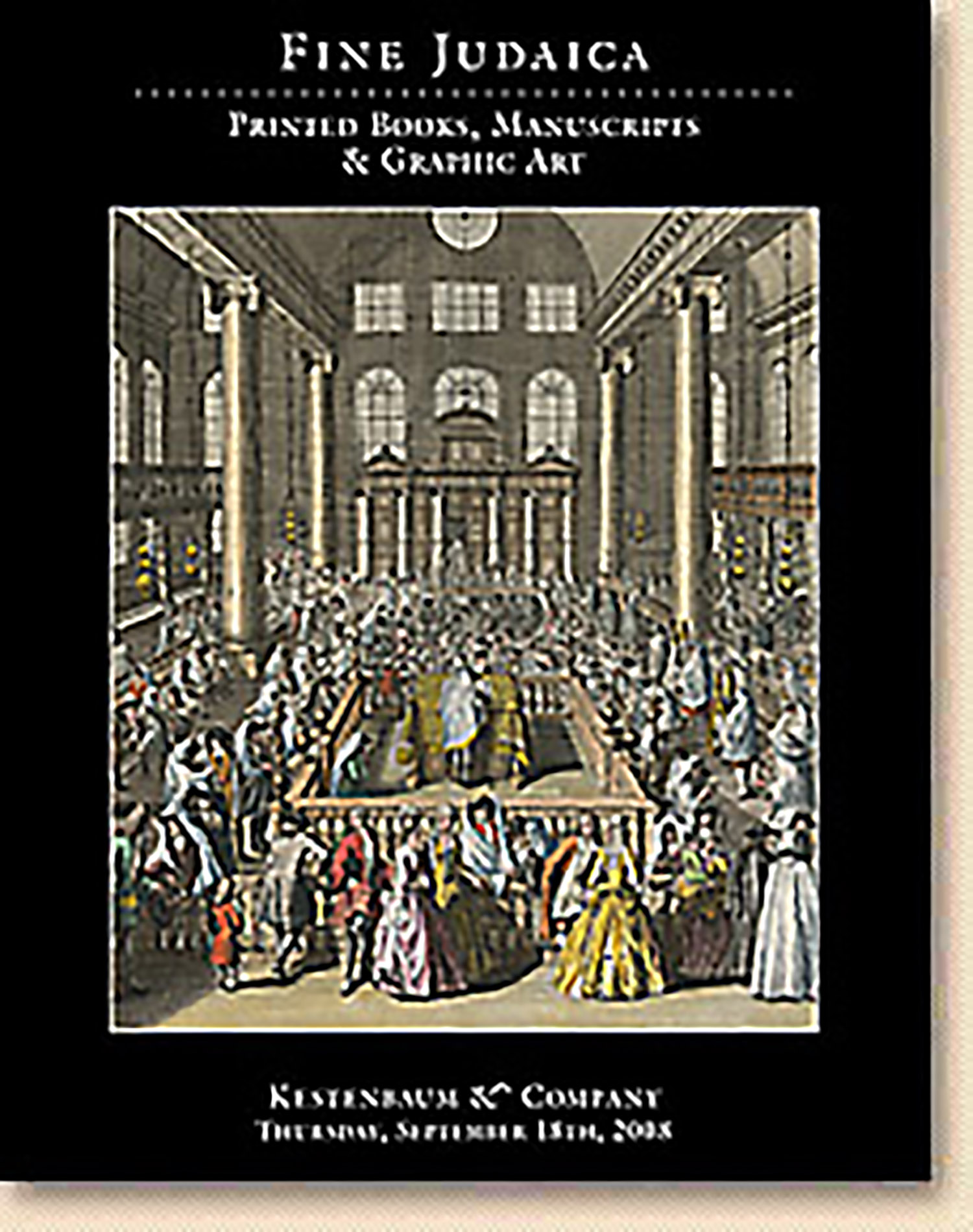Aristea de settenta due interpreti [“Aristeas on the Seventy-Two Interpreters.”] Greek text translated by Lodovico Domenichi

AUCTION 41 |
Thursday, September 18th,
2008 at 1:00
Fine Judaica: Printed Books, Manuscripts, & Graphic Art
Lot 59
ARISTEAS
Aristea de settenta due interpreti [“Aristeas on the Seventy-Two Interpreters.”] Greek text translated by Lodovico Domenichi
Florence: Lorenzo Torrentino 1550
Est: $1,000 - $1,500
PRICE REALIZED $850
Rare Translation of Letter of Aristeas
According to legend, King Ptolemy (Ptolemy Philadelphus) commissioned a team of seventy-two Jewish scholars to come from Jerusalem to Egypt to translate the Hebrew Bible into Greek. The translation came to be known as the Septuagint ("Seventy"). The Letter of Aristeas purports to be a factual account of those events.
The Letter of Aristeas is generally accepted as the composition of a Hellenized Alexandrian Jew, though it is difficult to ascertain exactly in which period he lived. It is assumed that "Aristeas" is a pseudonym, possibly after the true Jewish historian by that name. Thus, rather than an eyewitness account, the book amounts to a fictionalized version of the occurrence.
In 1571, the critical scholar Azariah de Rossi translated the Letter of Aristeas into Hebrew. The translation, entitled "Hadrath Zekenim," is included in de Rossi's magnum opus Me'or Einayim (see Lot 101)
See JE, Vol. II, pp. 92-94; Vol. X, p. 485; JE, Vol. III, cols. 439-440; M. Hadas, Aristeas to Philocrates (1951); A. Vaccari, "La lettera d'Aristea in Italia," in: idem, Scritti di erudizione e di filologia, Vol. I, Filologia biblica e patristica (Rome, 1952), pp. 1-23.
The Letter of Aristeas was an integral portion of the Latin version (Vulgate) of the Christian Bible. Nonetheless, we find Latin translations of the Letter as a separate work in incunabula: Arnold of Brussels ed., Naples, 1474; and later Erfurt, 1483. A later Latin translation by Palmer appeared in Paris in 1514. Though there were at least four earlier Italian translations of the Letter (1477, 1481, 1484, 1517), again, these were within the context of the Bible. Our translation byLodovico Domenichi is the first Italian translation printed as a separate work.The first edition of the Greek text of The Letter of Aristeas, by S. Schard, appeared in Basel in 1561. A German translation by J. Gobler appeared shortly thereafter in Frankfurt a/Main in 1562; a French translation by Guillaume Paradin in Lyon in 1564
